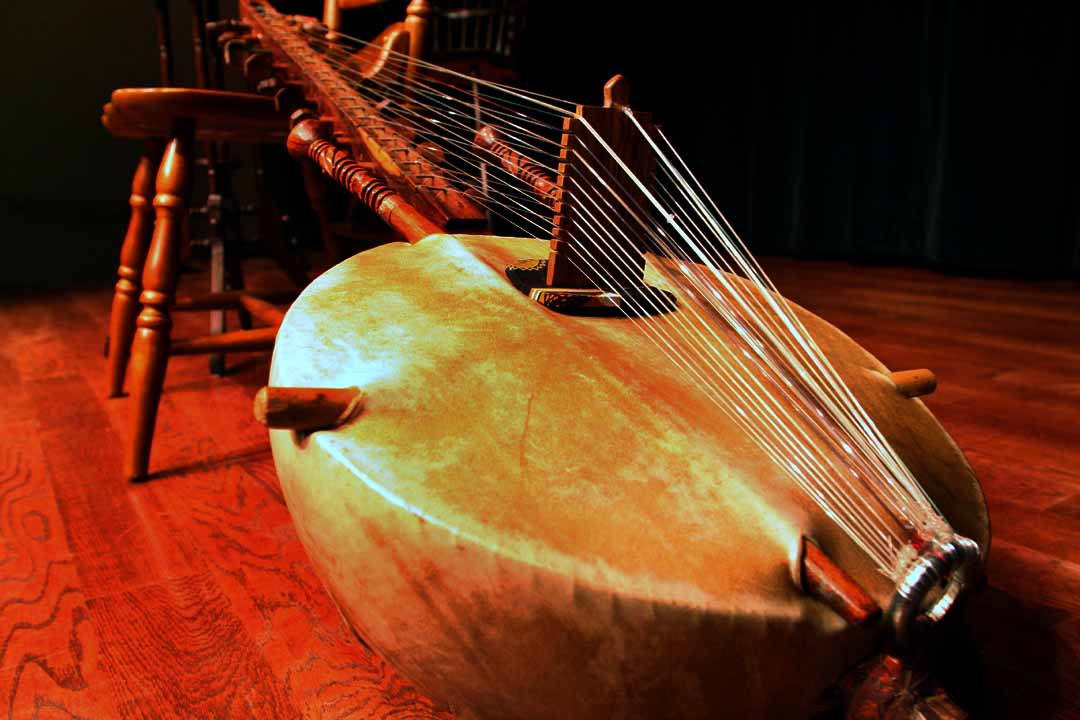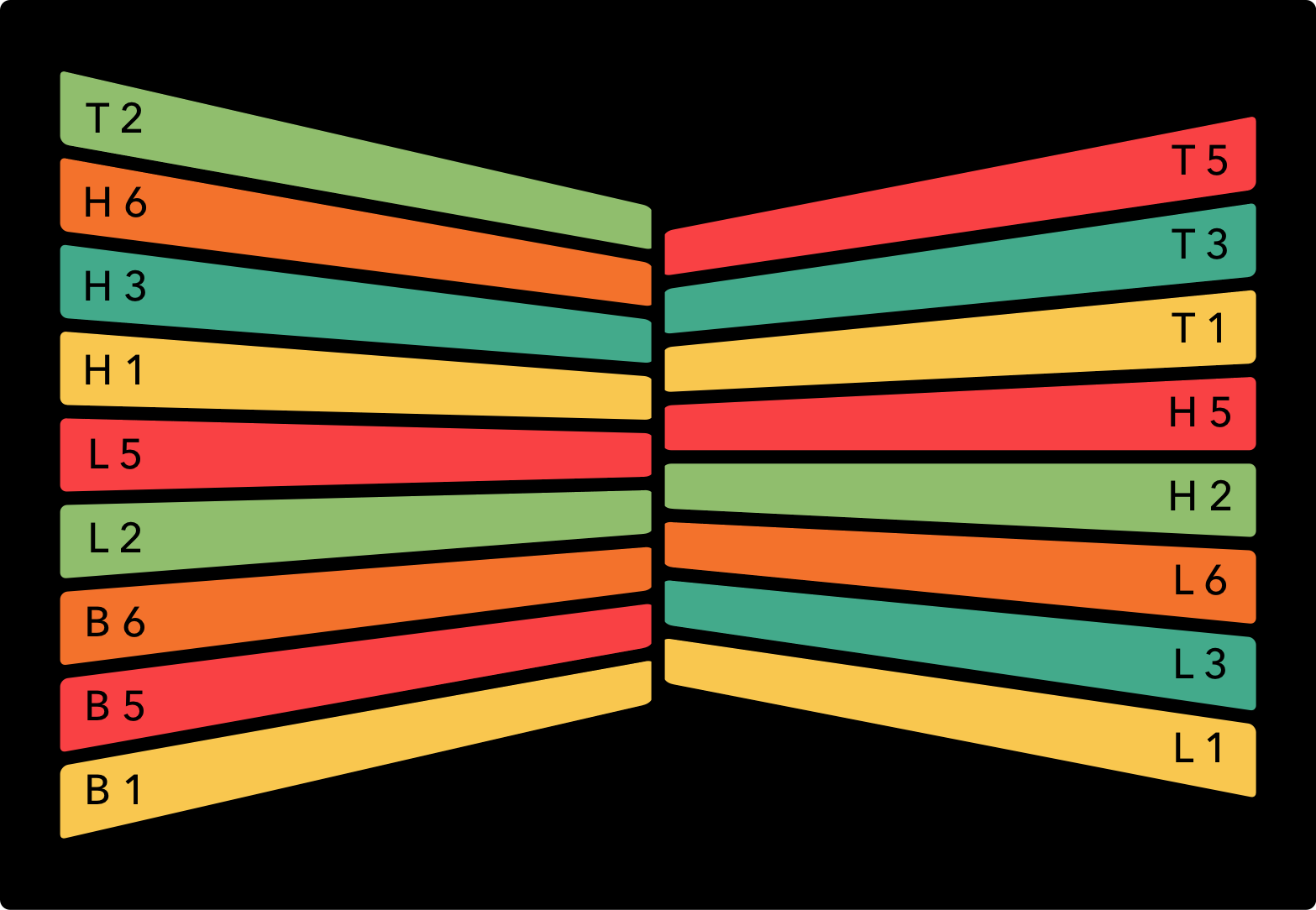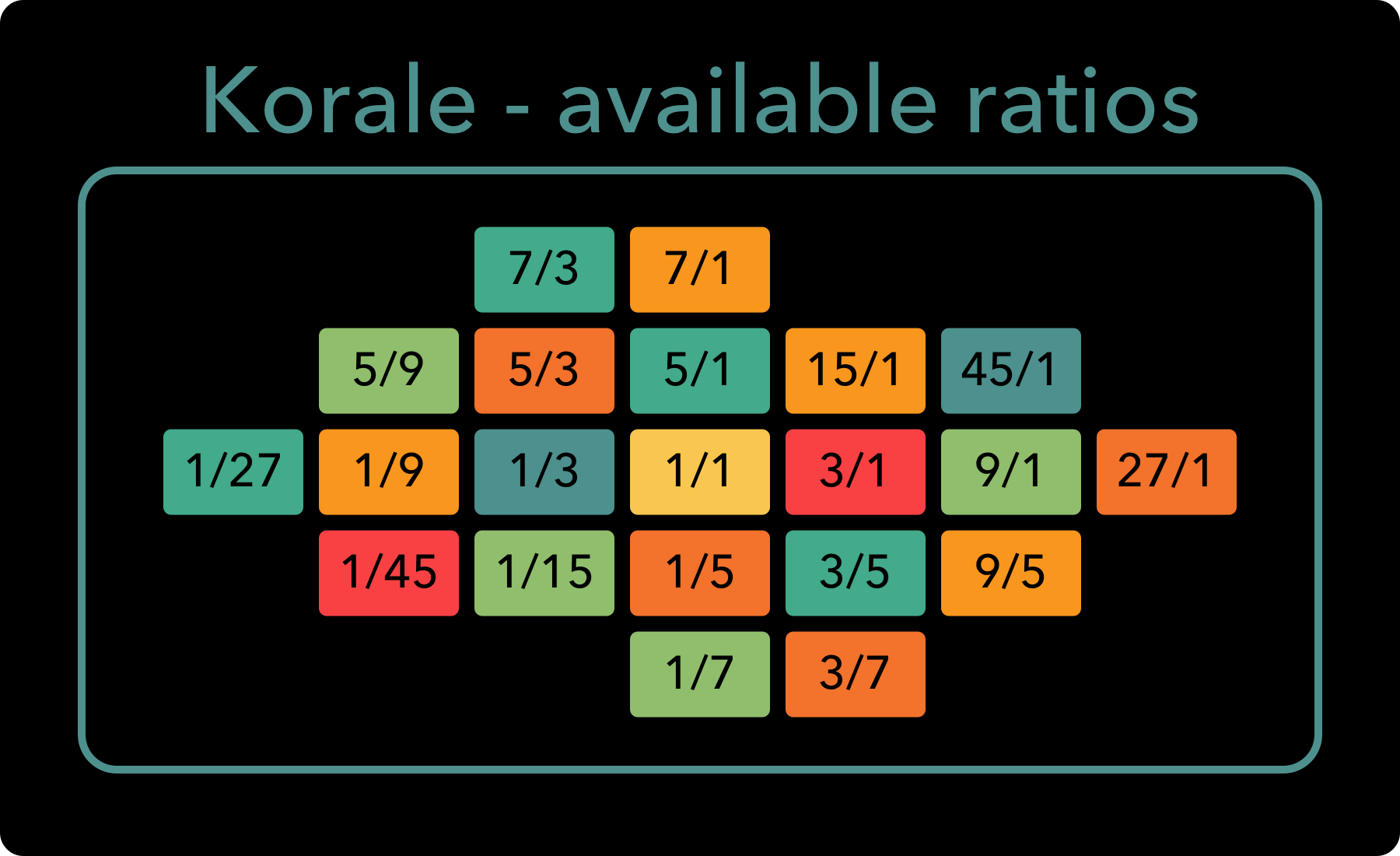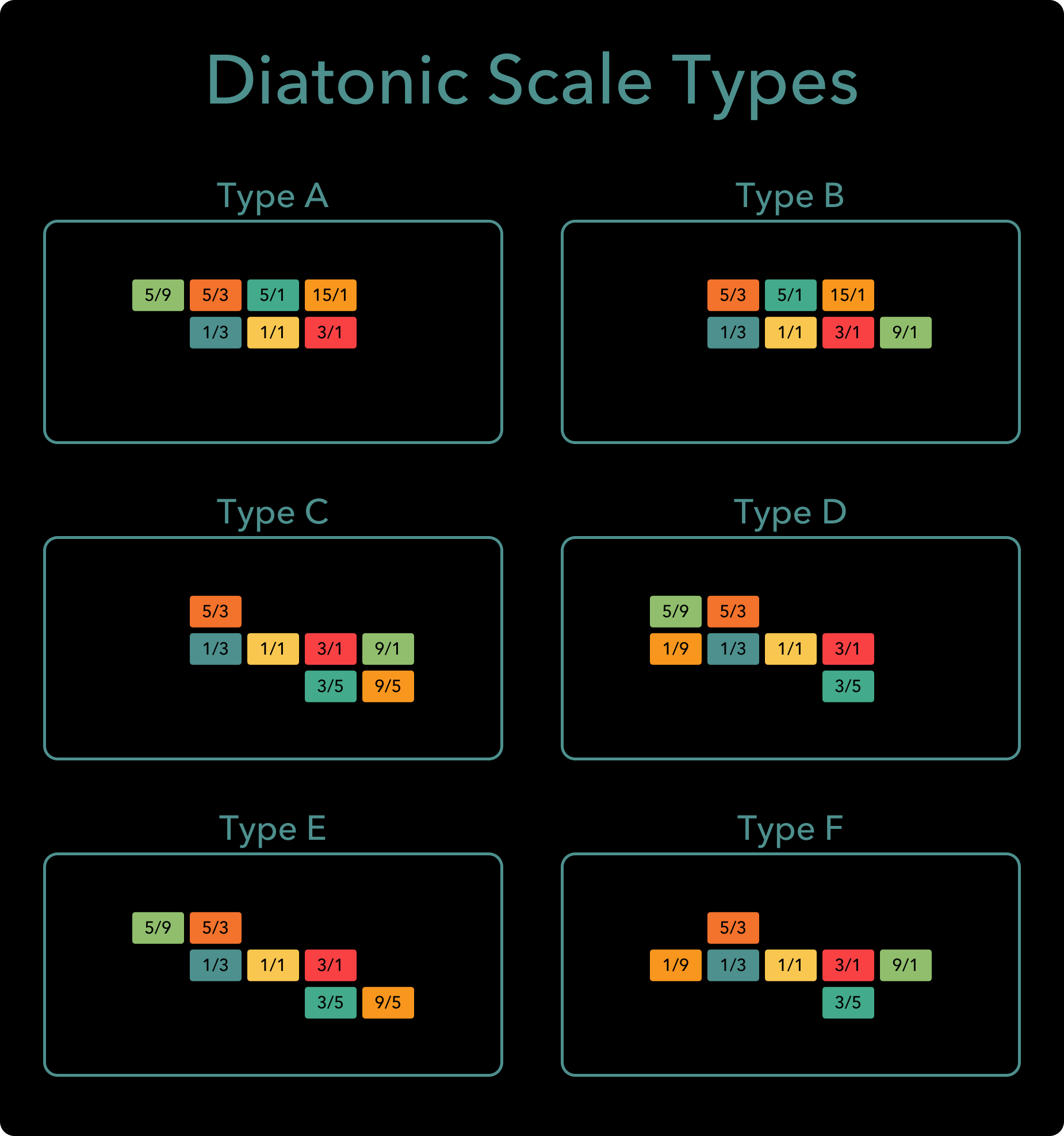The layout of the keys on the Arithmophone Korale was inspired by the Kora, a West-African harp. The Kora has 21 strings, 11 on the left hand side and 10 on the right. The strings are tuned to a diatonic scale (a scale with 7 different notes).

In diatonic mode, the Arithmophone Korale closely follows the note pattern of the Kora, with 11 notes on the left side and 10 on the right. The notes are arranged in such a way that scales (and scale-like melodies) are easily played by alternating the left and right hand. The notes cover a range of two complete octaves in the middle, with incomplete octaves above and below.

In pentatonic mode, the Arithmophone Korale provides scales with only 5 different notes per octave (the name comes from ‘penta’, the Greek word for ‘five’). Pentatonic scales are also very common in many kinds of music, from traditional bamboo flute to heavy metal guitar.
On the Arithmophone Korale, the pentatonic keyboard features 17 keys (9 on the left, 8 on the right). Because there are fewer notes, we also need less keys to obtain the same range. In fact, the pentatonic keyboard goes slightly higher than the diatonic one. This also means that the keys are slightly larger, making them easier to play on smaller screens. An added benefit of pentatonic scales is that there are very few “wrong” sounding note combinations, making them very beginner-friendly.

All scales on the Korale offer a 5 or 7 note selection from an underlying 21-note scale. The complete scale is presented in the diagram below. Please note: the middle three rows follow the pattern of a 3-5 grid, the notes in the top and bottom rows are 7-limit ratios added on to this.

This allows for a number of alternatives for each scale position scale position:
1st note of the scale: 1/1
2nd note of the scale: 1/15 (minor second), 5/9, 9/1 (major seconds) or 1/7 (septimal major second)
3rd note of the scale: 7/3 (septimal minor third), 1/27, 3/5 (minor third) or 5/1 (major third)
4th note of the scale: 1/3 (perfect fourth) or 45/1 (augmented fourth)
5th note of the scale: 1/45 (diminished fifth) or 3/1 (perfect fifth)
6th note of the scale: 1/5 (minor sixth), 5/3, 27/1 (major sixth) or 3/7 (septimal major sixth)
7th note of the scale: 7/1 (septimal minor seventh), 1/9, 9/5 (minor seventh) or 15/1 (major seventh).
In just intonation, there is usually more than one way to create a specific scale. In 12 tone equal temperament, there is just a single set of notes that produces a D Dorian scale, but in just intonation there are many. I have distinguished some of the possibilities and and labeled them as different types in the illustration below.

The “Type A” and “Type B” scales shown in this illustration are both major (Ionian) scales and in 12 tone equal temperament they would be identical. With the note D taken as 1/1, they both produce the notes D, E, F#, G, A, B, C#, D. However in just intonation, the “Type A” scale produces a perfectly tuned E minor chords but an out of tune A major chord, whereas in the “Type B” scale this is the other way around (a perfectly tuned A major chord but an out of tune E minor chord). Which scale works best in a given context is determined by the melodic material and harmonic progression of the musical piece. This makes diatonic music in just intonation both more complicated and less flexible than in equal temperament. However, the advantage is that it results in a degree of “in-tune-ness” and harmonic resonance that is simply not attainable in 12 tone equal temperament. Scales with the “Type A” or “Type B” shape have what I would call ‘maximum harmonicity’. Each of these scales accommodates 5 different perfectly tuned triads and this is the highest number possible for a diatonic scale. In the case of Ionian Type A, these chord are: I major, II minor, III minor, IV major, VI minor. In the case of Ionian type B they are: I major, III minor, IV major, V major, VI minor. The other scale shapes (Type C-F) all have less well tuned chords contained within them, yet these shapes are important too, because they map to many common chord progressions that don’t fit with the A or B types. In the illustration above, the types C through F all produce Dorian scales, each accommodating different chord progressions. For example, to match the chord progression I minor – IV major, bVII major, we would need to use the “Type D” scale.
I have used these – and other – scale types to create a selection of 21 diatonic scales on the Arithmophone Korale. They are shown below here in diagram form.

For pentatonic scales, there isn’t really a generally accepted naming convention, so I decided to get a little creative myself:

In Western music, there are only two common pentatonic scales (known simply as ‘minor pentatonic’ and ‘major pentatonic’). I labeled the shapes that produce these scales “Occident”. Two other shapes that I recognised form Ethiopian and Japanese music, I labeled “Orient”. Then I found two more shapes I wanted to use because I liked their sound, even though I didn’t really recognise them from any musical tradition that I’m familiar with. I labeled these “Mirror” because they form the mirror image of the “Orient” shapes. Since each of these shapes comes in two versions (which are in fact a 180 degree rotation of each other), I used the terms “Sun” and “Moon” to distinguish these. This is closely related to the distinction between major (Sun) and minor (Moon), but since pentatonic scales don’t always contain a third and are therefore sometimes neither major nor minor, strictly speaking, I decided that a separate term was warranted. To further distinguish different scales, I also used the letters O for ‘Overtonal’ and U for ‘Undertonal’, depending on the positioning of the 1/1 ratio within the shape. Because I wanted each pentatonic scale to be a subset of the corresponding diatonic scale, some overlap was hard to avoid, resulting in a selection of 19 different pentatonic scales:

I hope this article explains some of the workings of the different Arithmophone Korale scales and that it will encourage you to play around with them and experiment freely. If you have any feedback, corrections or suggestions, please let me know!
This page is part of my Arithmophone project.
Arithmophone concept and design by Chiel Zwinkels © 2024
